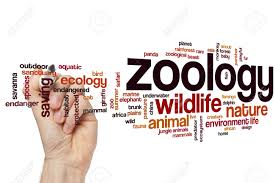W.B.C.S Main 2003 Optional Question Paper Zoology.
W.B.C.S Main 2003 Optional Question Paper Zoology paper 1
Group – A.Continue Reading W.B.C.S Main 2003 Optional Question Paper Zoology.
(Answer any three questions.)
1. What is the difference between taeniasis and cysticercosis ? Describe the developing stages of the parasite that causes these diseases. 5+15=20
2. Describe in brief the structural parts of the typically echinoderm ambulacral system with a note on their functions. In what echinoderm this system is nonambulatory ? 12+5+3=20
3. What are ‘Ratites’ and ‘Carinates’? Tabulate their important differences. 3+17=20
4. Discuss the parental care of amphibians in respect of any three of the following modalities :
(a) selection of sites,
(b) formation of nests,
(c) Carrying eggs over the body,
(d) viviparity. 2+6+6+6=20
5. Write brief notes on any four of the following :
(a) Syeonoid type or Leuconoid type of canal system
(b) Zoological importance of Peripatus
(c) Compound eyes of prawn
(d) Physostomous swim bladder
(e) Characteristic features of class Mammalia
(f) Axolotl larva and Bipinnaria larva
(g) Types of scales and caudal fins in fishes
(h) Book lungs and Nephrocytes in Arthropoda. 5×4=20
Group-B
Answer any two questions.
6. Describe in brief the biotic components of the ecosystem. Explain how those components may combine to form food chain and food web. 10+5+5=20
7. What is meant by environmental pollution ? Explain primary and secondary pollutants of air indicating their harmful effects on plants and animals. 3+13+4=20
8. Elucidate the characteristics of social insects and name the Insects showing the most highly organised social life. 18+2=20
9. Write brief noteson any four of the following :
(a) Biological clock
(b) Honey bees of Indja j-irtd their econ-omicvimportance
(c) Chi square (x2) test
(d) Lac Insects
(e) Composite fish culture
(f) Nerltic zone. Oceanic zone and Euphotic zone of the oceanic ecosystem
(g) Mutualism
(h) Integrated Pest Management. 5×4=20
W.B.C.S Main 2003 Optional Question Paper Zoology paper 2
Group – A
(Answer any three questions.)
1. Describe the ultrastructures and functions of Golgi bodies. 15+5=20
2. Give an account of protein synthesis in prokaryotes. 20
3. Comment on : (any four)
(a) Turner’s syndrome
(b) Teminism
(c) Okazaki fragments
(d) Alkaptonuria
(e) Palindromic DNA 5 x 4
4. Give an account of chemicai basis of origin of life 20
5. Differentiate between :
(a) Sympatric and allopatric species
(b) Vertical and horizontal classification
(c) Taxonomy and systematics
(d) Hierarchy and key. 5 x 4 =20
6. Write short notes on : (any four)
(a) Primitive streak
(b) Grey crescent
(c) Rathke’s pocket
(d) Coloboma iris
(e) Fertilization membrane. 5×4=20
7. What do you mean by photopic and scotopic visions ? What are the advantages of binocular vision ? State the photochemical changes in the cone cells when light falls on it. What is visual acuity ? 4+4+10+2=20
Group-B
Answer any two questions.
8. Give an account of the role of kidney in acid-base balance. 20
9. State the properties of Enzymes. What do you know about competitive and non-competitive inhibitors ? 15+5=20
10. Write notes on : (any four)
(a) Neoglucogenesis
(b) Heteropolysaccharides
(c) Rancidity
(d) Conjugated proteins
(e) Po’leriske number. 5×4=20
Our own publications are available at our webstore (click here).
For Guidance of WBCS (Exe.) Etc. Preliminary , Main Exam and Interview, Study Mat, Mock Test, Guided by WBCS Gr A Officers , Online and Classroom, Call 9674493673, or mail us at – mailus@wbcsmadeeasy.in
Visit our you tube channel WBCSMadeEasy™ You tube Channel
Please subscribe here to get all future updates on this post/page/category/website



 Toll Free 1800 572 9282
Toll Free 1800 572 9282  mailus@wbcsmadeeasy.in
mailus@wbcsmadeeasy.in


















































































































